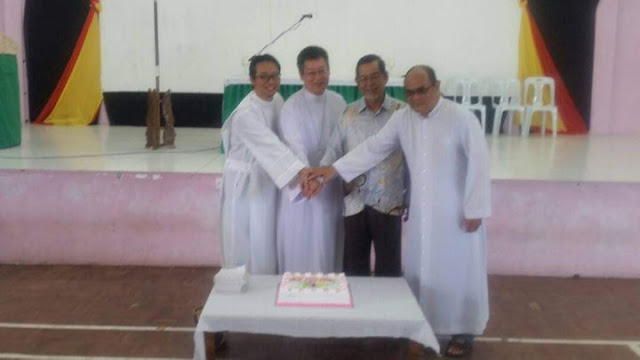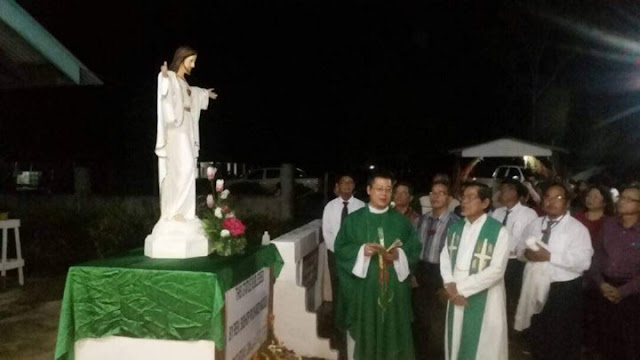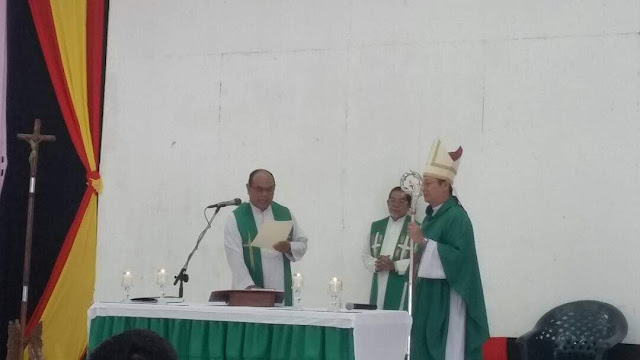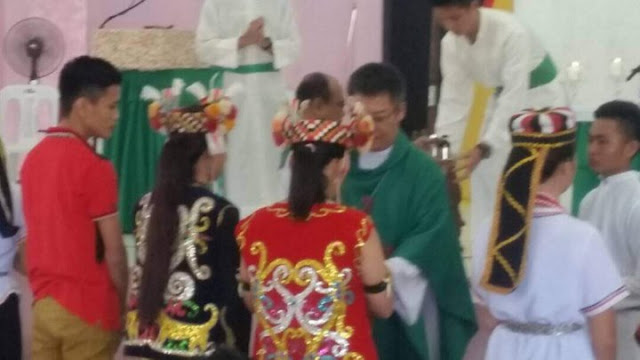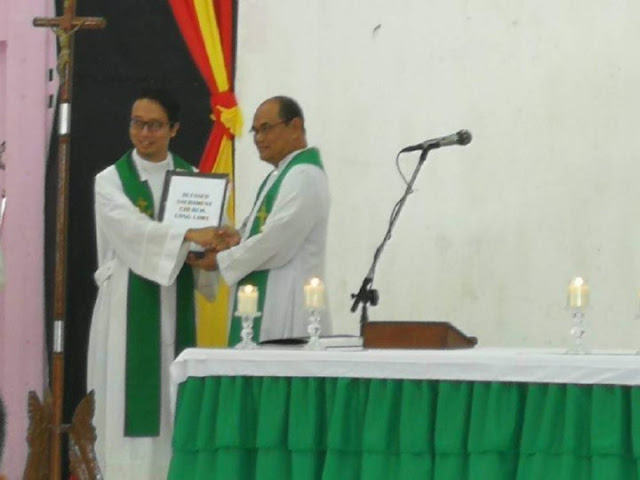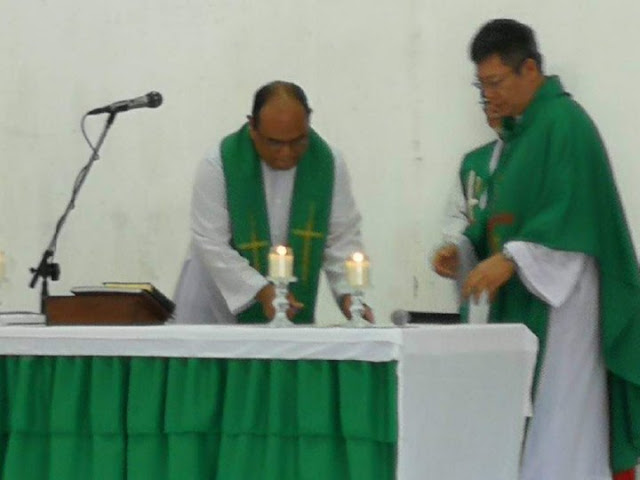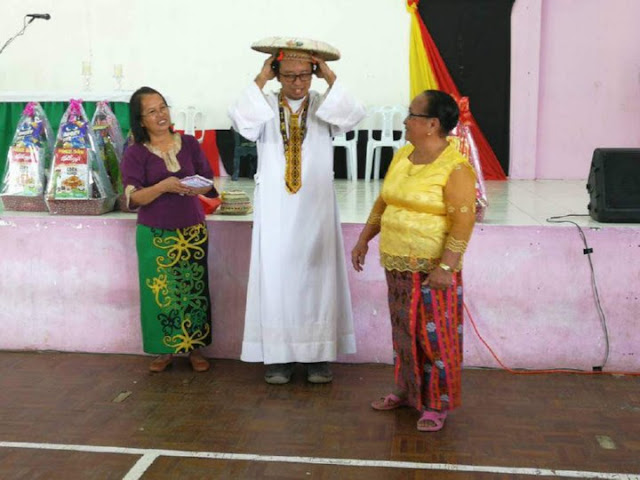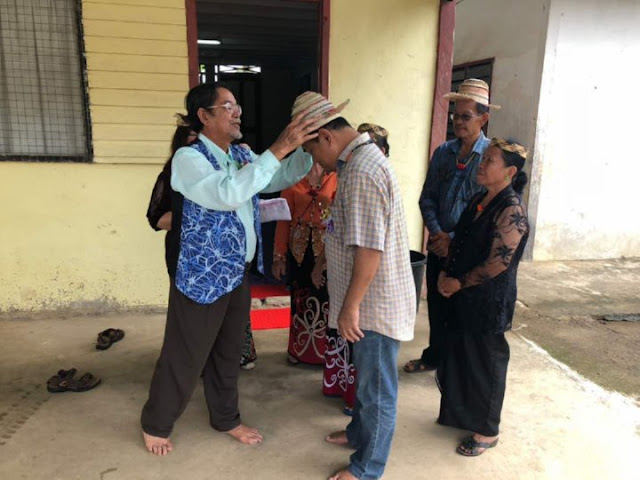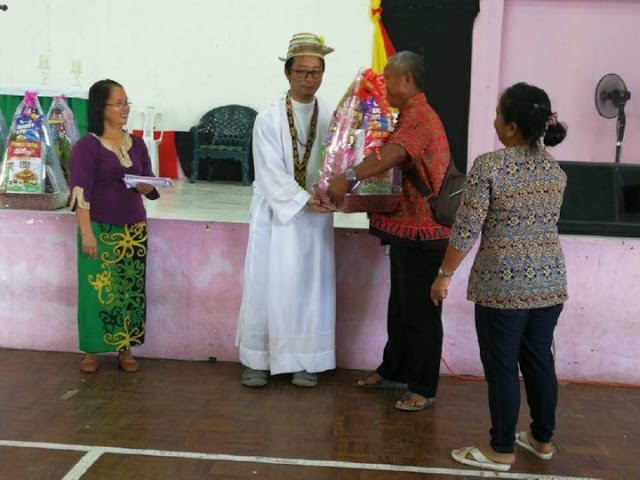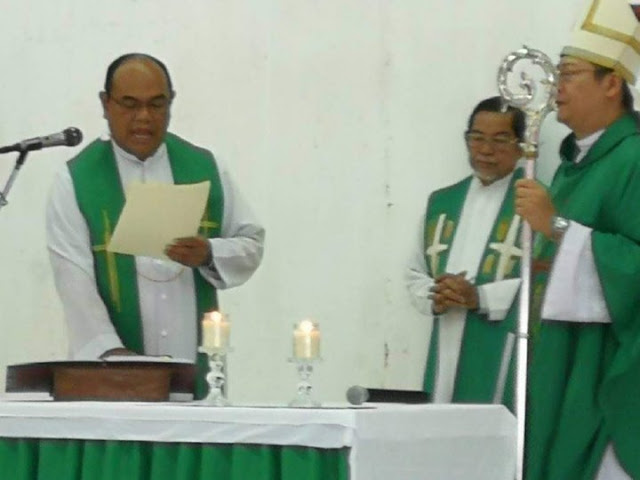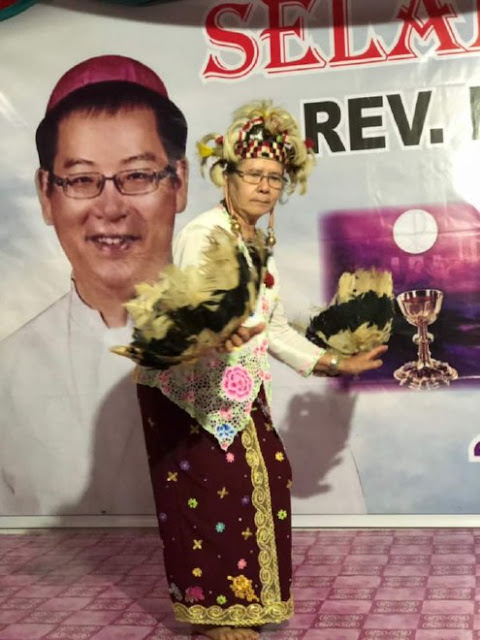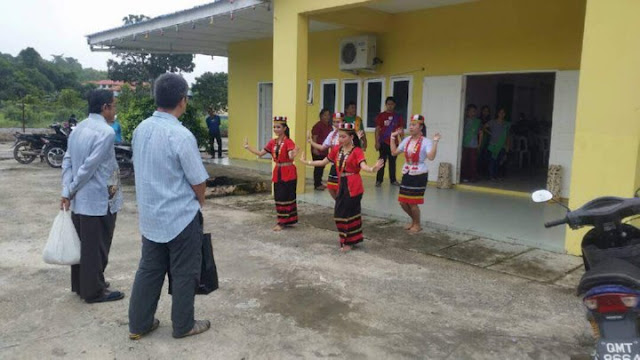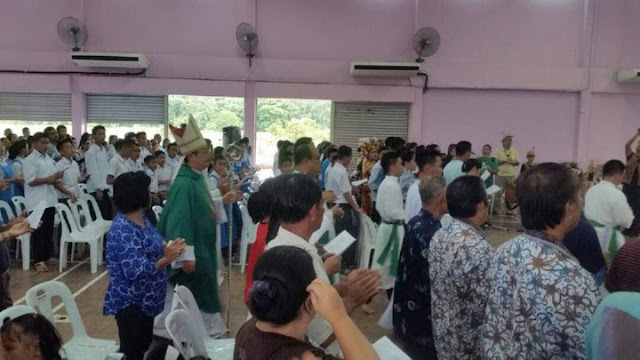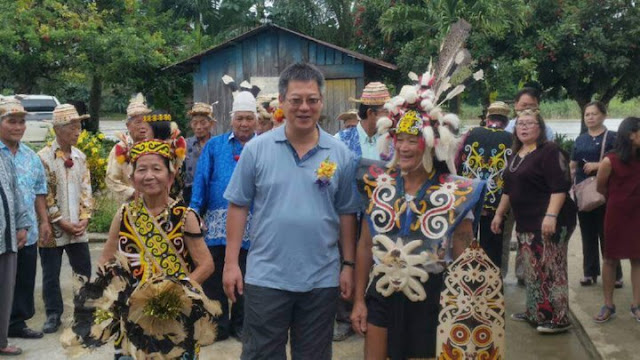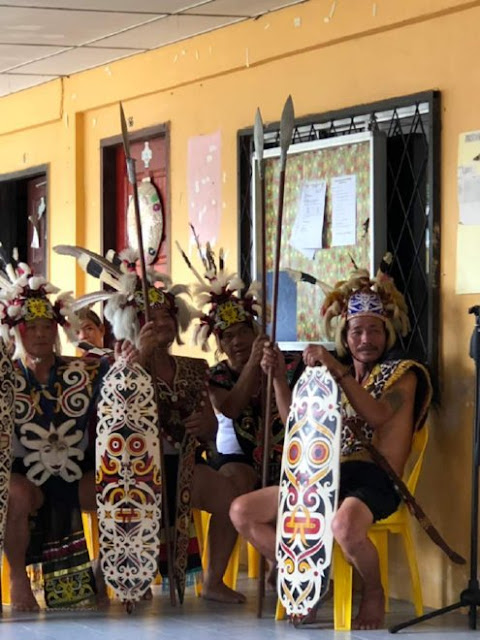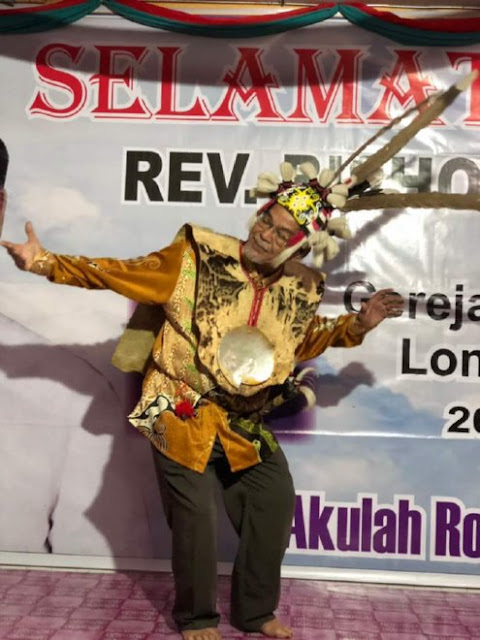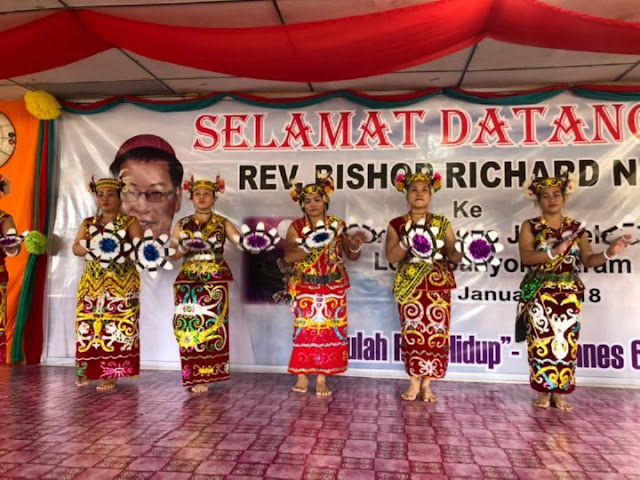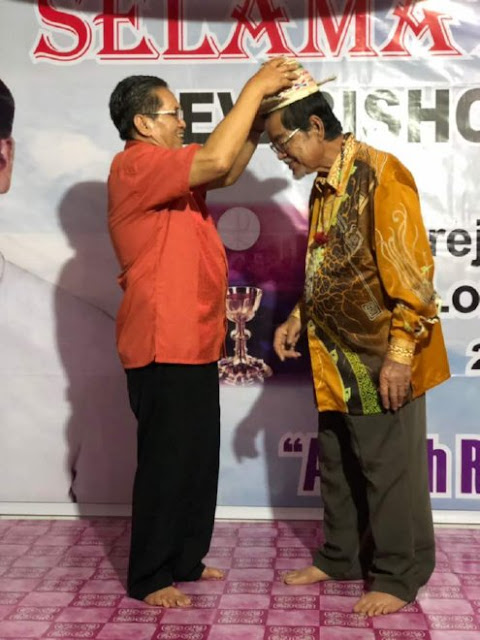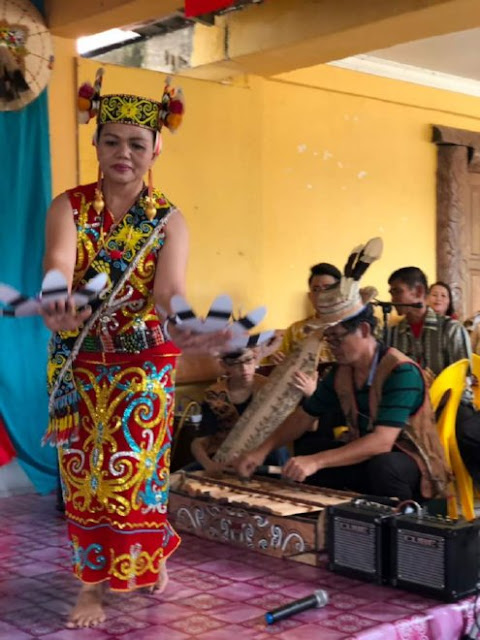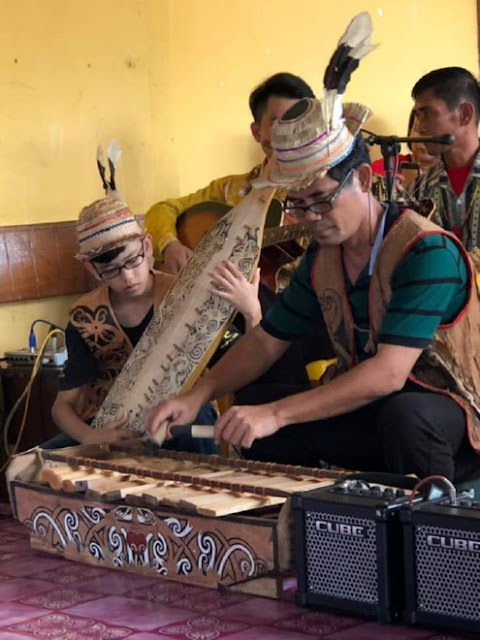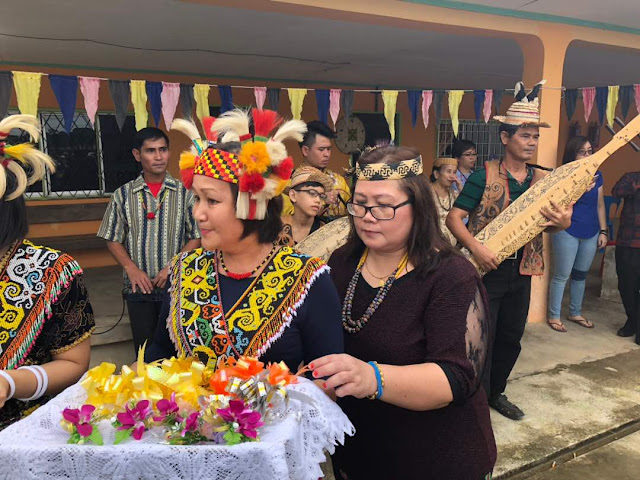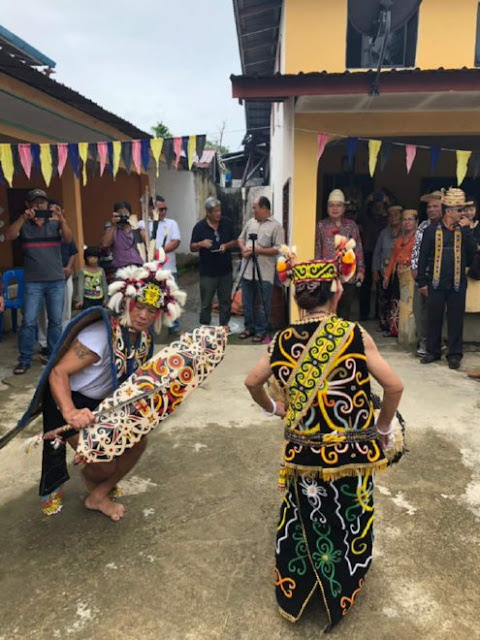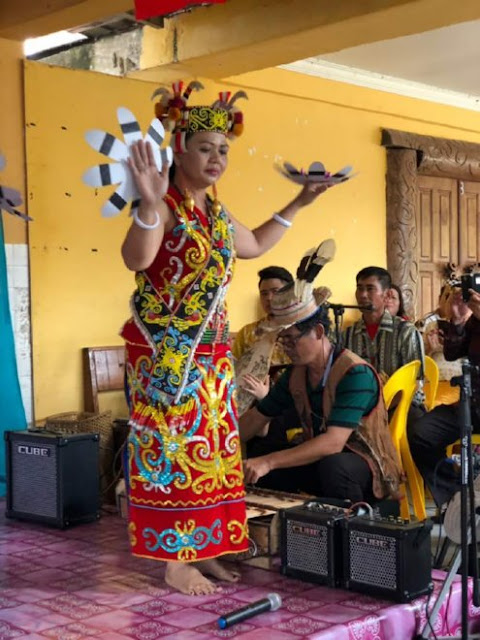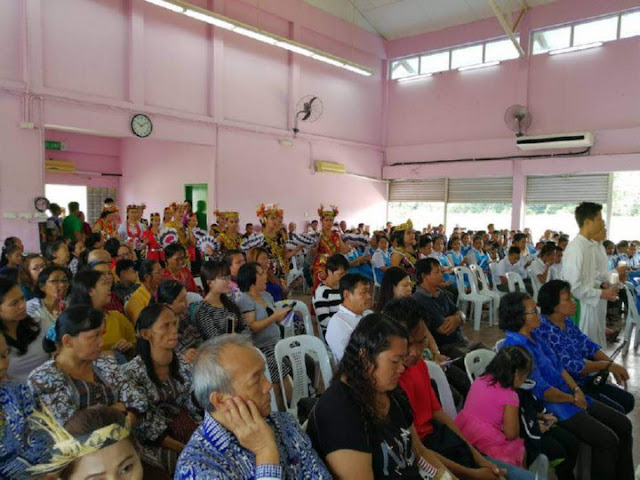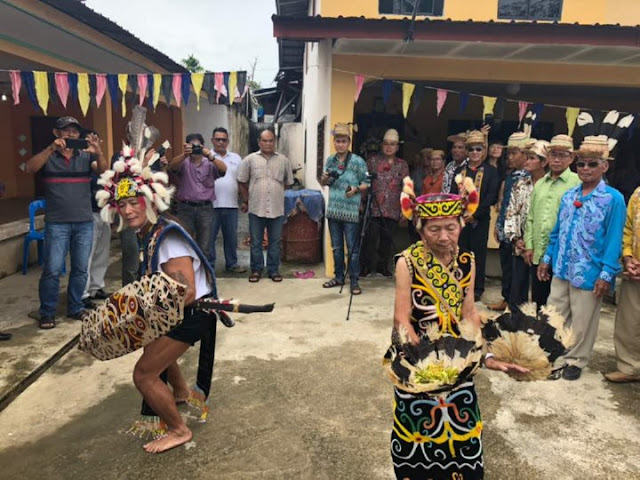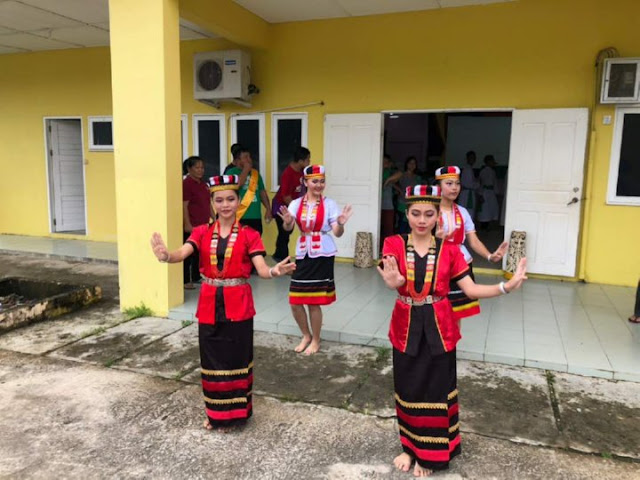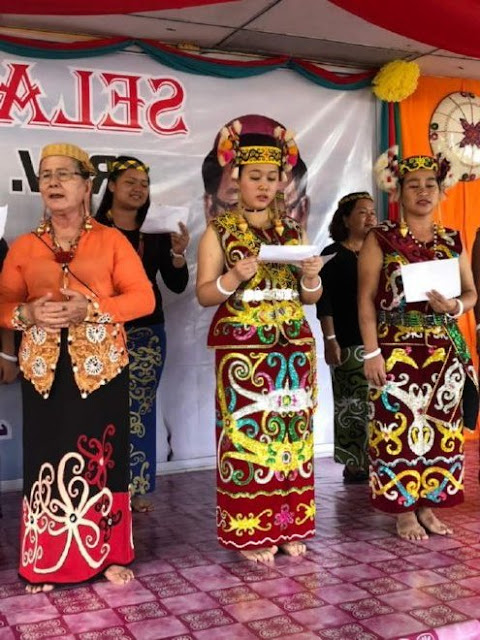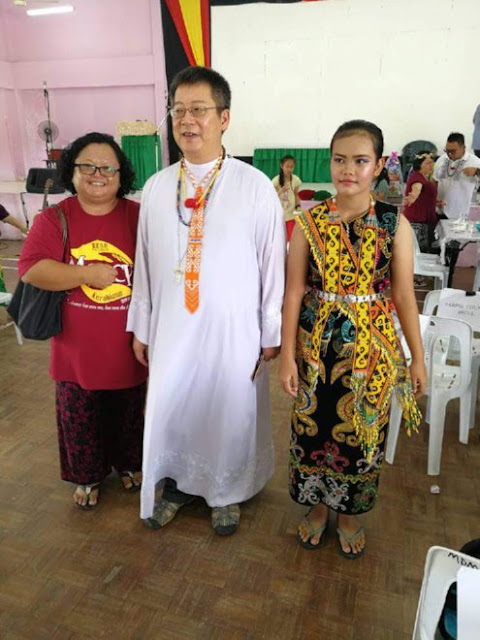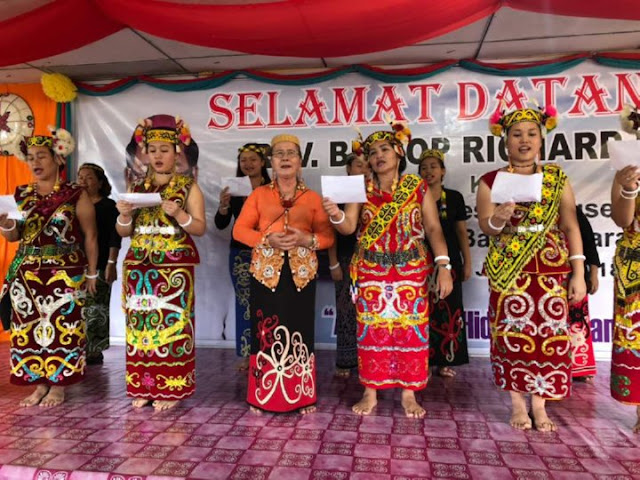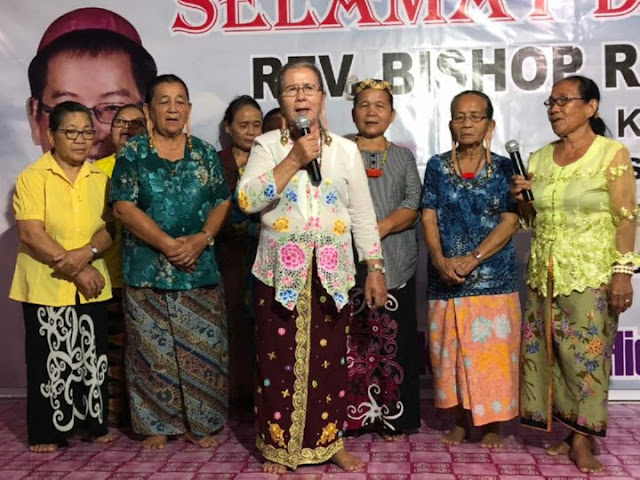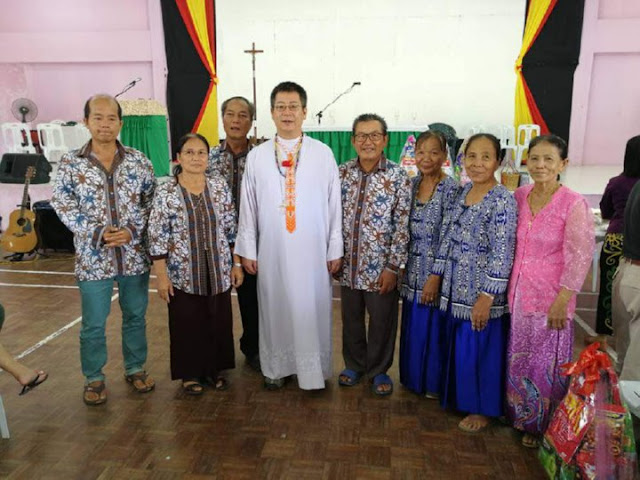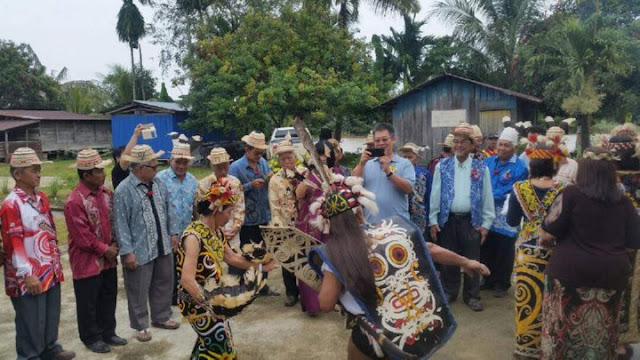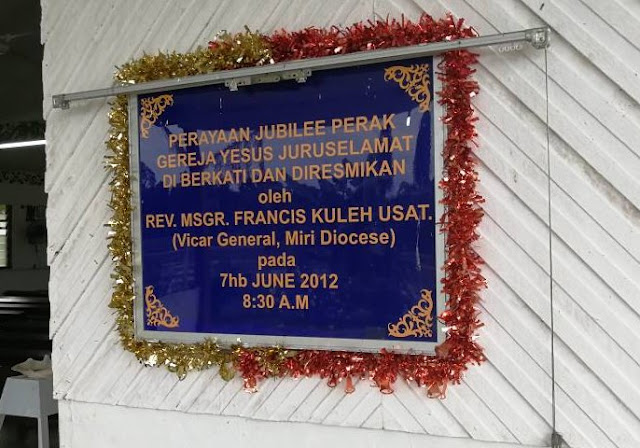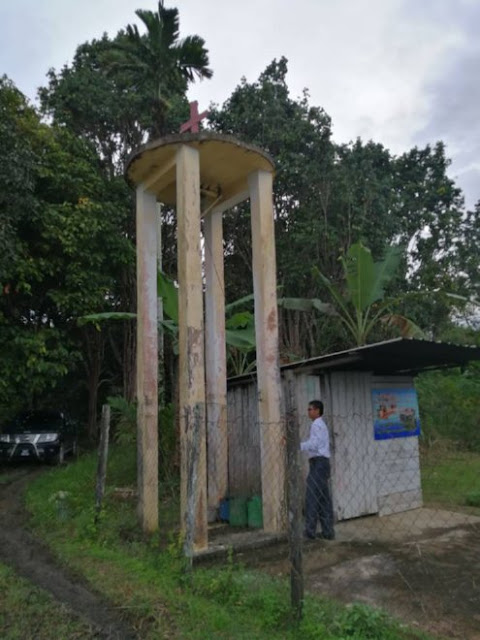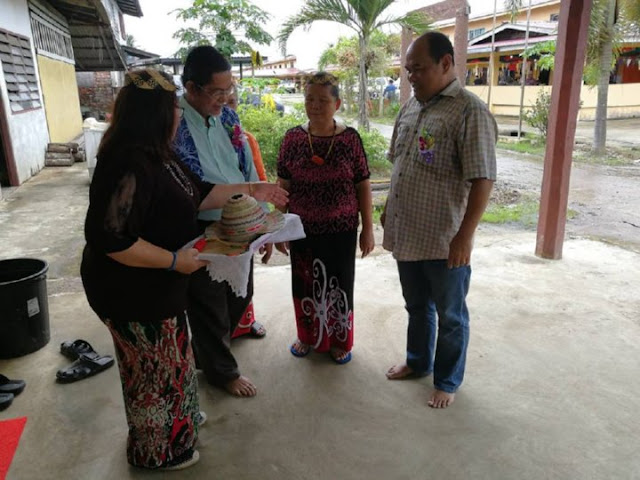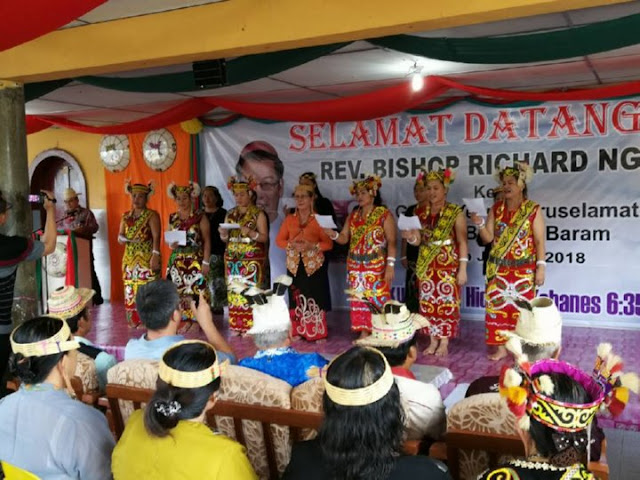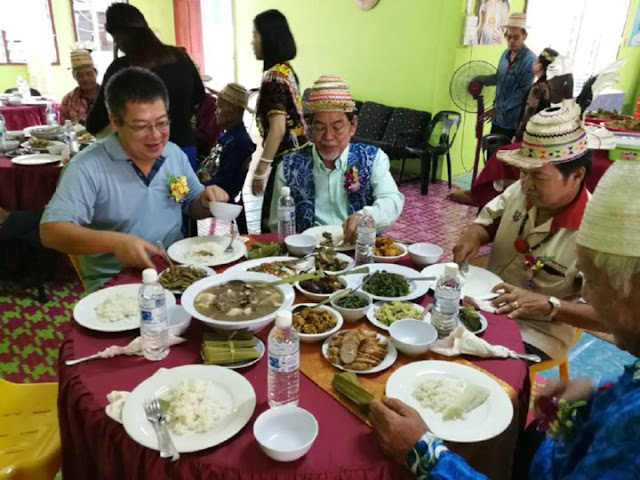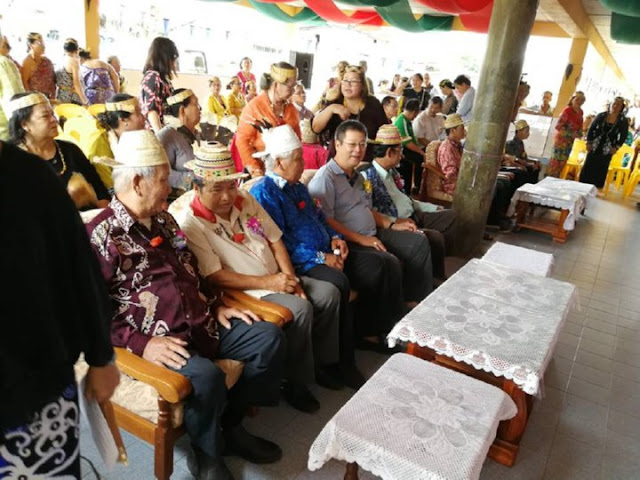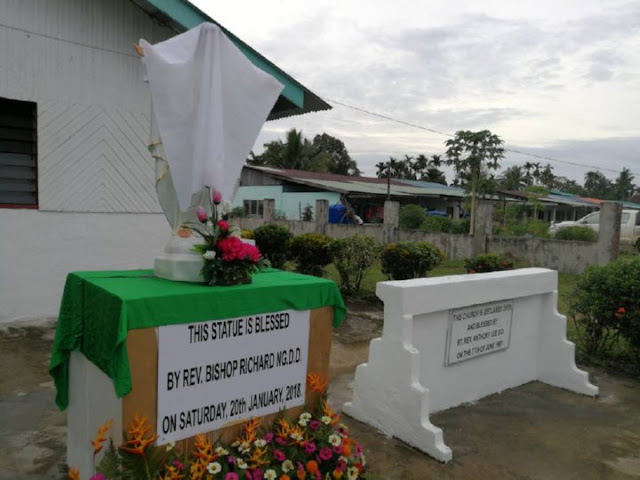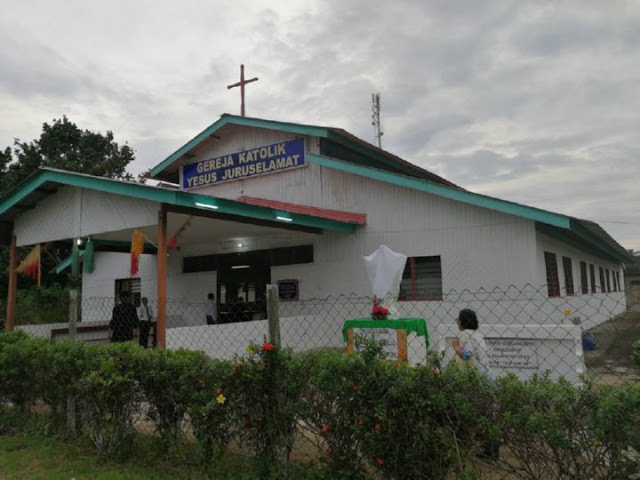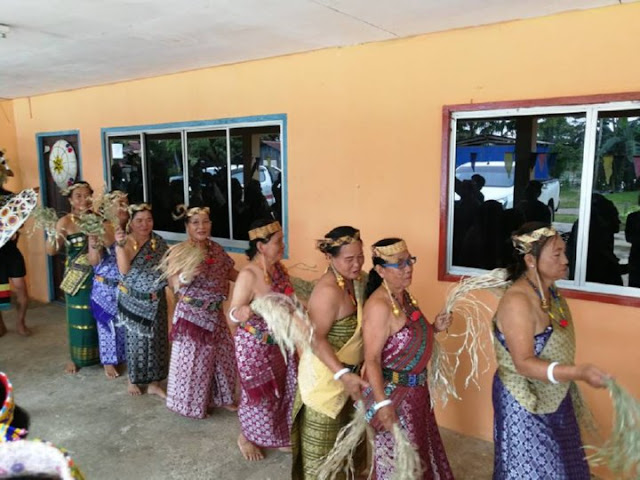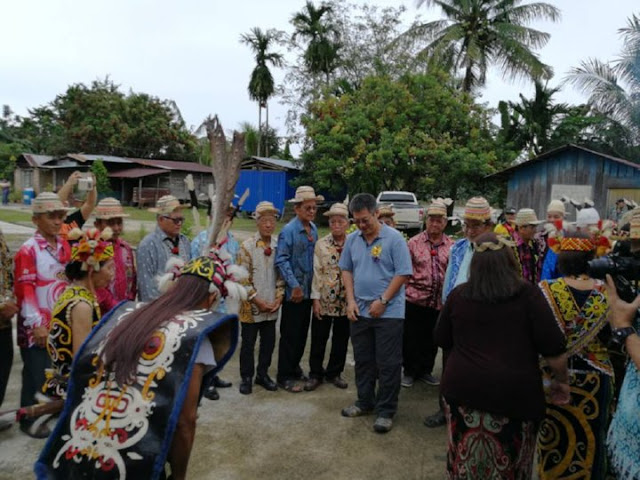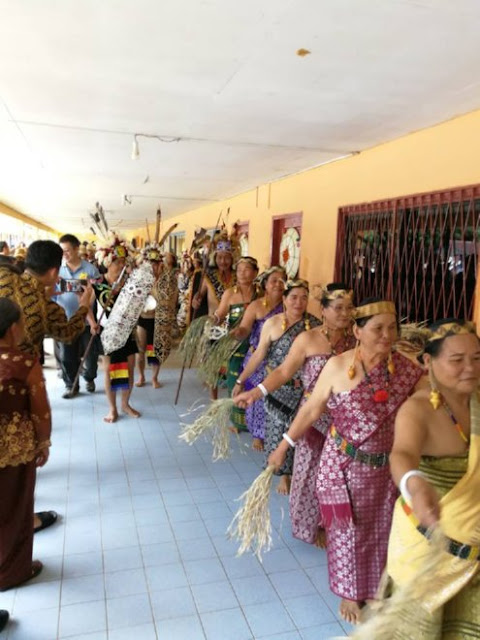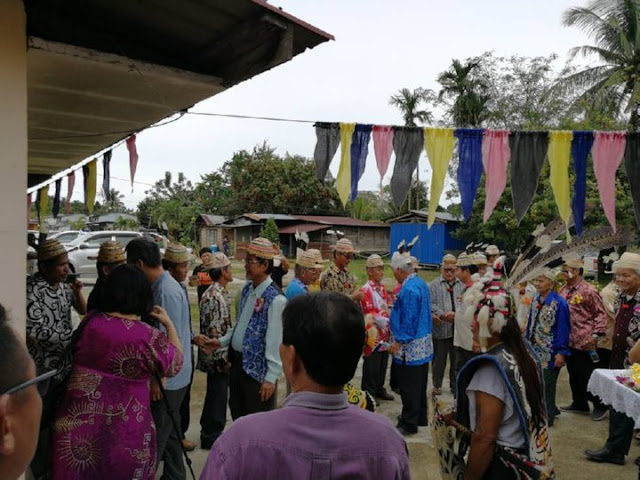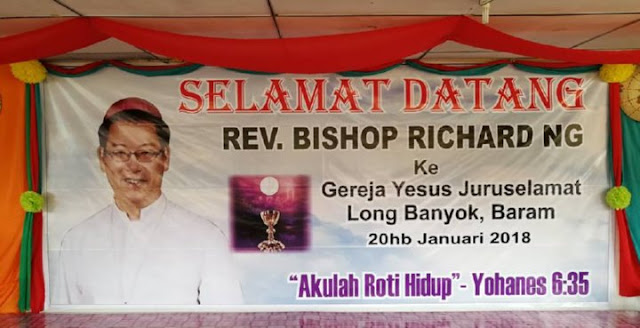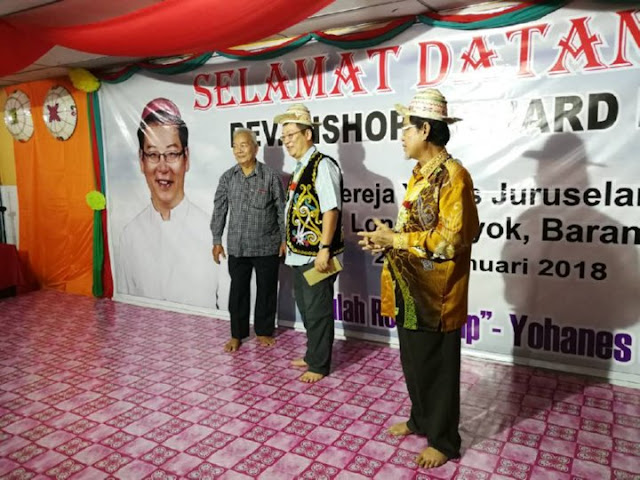KUCHING — The blessing and ground breaking ceremony by Archbishop Simon Poh for the construction of the Columbarium at St Peter’s Church took place on 5 December 2017. About 50 people consisting of consultants, contractors, parish councillors, members of a Humanitarian Foundation and some parishioners attended the auspicious occasion.
In his welcoming speech, the Archbishop thanked the councillors, parishioners and benefactors, especially the Humanitarian Foundation, to have made this project possible. He said that the Columbarium is a sacred place for keeping the cremated remains of the departed. Through the Humanitarian Foundation, some of the niches will also be made available for the needy and poor Catholics as their final resting place.
A columbarium is a building where ‘niches’ are placed to house cremated remains of the deceased. The name derives from an Italian word ‘columba’, which means ‘the dwelling place of a dove’. Niches are spaces in the walls of the columbarium for the inurnment of human remains after cremation.
When asked why the parish decided to build a columbarium in the parish compound, the rector of St Peter’s Church, Fr Vincent Chin, explained that they are trying to restore an old tradition of the Church. “The old tradition of the Church was to have a cemetery next to a church to make sure that those who passed away were close to the believing community. So all those while, wherever there was a church, there was always a cemetery next to it,” he said.
The proximity of the cemetery to the church makes it convenient for church-goes to visit and pray for their departed loved ones as often as they go to the church. It also serves as a reminder that it is their responsibility to pray for those who are gone, and that they too would be laid there one day. It is also to show that there is nothing to fear about the dead.
With the current scarcity of land in Kuching and the government regulations on burial places, having a cemetery near a church is next to impossible. That is why Catholic cemeteries are located further and further away. The nearest cemetery in Kuching accessible to most Catholics is the one at 13th-1/2 Mile.
“In this kind of situation, people would probably only go to the cemetery twice a year, once during the death anniversary of the person, another on All Souls Day,” remarked Fr Chin. “Other than that, they (the dead) are mostly forgotten,” he said. “The presence of the columbarium will bring that old tradition back.”
“When we decided to have this columbarium, we make it our responsibility and commitment to include the departed on every All Souls Day and every Friday in November and in their death anniversary month, regardless if their families offer Mass for them or not,” said Fr Chin. He said a lot of parishioners are worried there is no one to pray for them when they passed on because their children are overseas and they have no other relatives or friends in town. “We assure them that they will be taken care of,” he added.
The document Ad resurgendum cum Christo, an instruction “regarding the burial of the deceased and the conservation of the ashes in the case of cremation” issued by the Congregation for the Doctrine of the Faith on 15 August 2016, mentions that although the Church prefers burial at cemeteries, she has no doctrinal objections towards the practice of cremation. “Cremation of the deceased’s body does not affect his or her soul, nor does it prevent God, in his omnipotence, from raising up the deceased body to new life,” the instruction says.
Instead, the Church is more concerned about the proper handling of the cremains. “In the past there was no ruling or guidelines, and so people just simply threw the ashes away,” Fr Chin explained. The document highlighted three points: firstly, the ashes must not be scattered anywhere; secondly, no subdividing of the cremains; and thirdly, the cremains are not allowed to be kept at home.
The practice of scattering of the ashes into the natural environment is a Buddhist practice, he pointed out. “The Buddhists believe that when we die, we enter into nothingness. The ashes are no longer important, and so you can do whatever you like with them,” he said. “However, for us, Catholics, once a person is cremated, the cremains is still the remains of a person, just like the remains of a person who is buried in the ground. So the Church emphasises that proper respect to the ashes must be given,” he added.
On why the Church forbids keeping the ashes at home, Fr Chin said, “Your children may respect you and hence, they would want to keep the urn properly. But for the subsequent generations who do not know you, the chances that the ashes are not properly cared for are high.”
One of the reasons for building a columbarium is that the local church still does not have a decent place for Catholics who opted for cremation. As a result, their ashes have to be interred at Buddhist columbaria. “This is not a good reflection on the church,” he said. “If we allowed for cremation, we must also have a proper place for them too.”
Asked on the procedures to secure a desired niche at the new columbarium, Fr Chin said parishioners can give a specific donation. The donation will be used to build the columbarium, while the excess will go to pay for the construction of the new parish church. “In appreciation of the donation, we offer the donors a space in the columbarium. They don’t own the space. Everything is still owned by the church,” he said.
Such arrangement is made so that, if in the future, should the columbarium need to be relocated to make way for a more important development, or the government suddenly wanted to take back the land where the columbarium is, the church would not need to ask permission from every family whose family members’ remains are kept in the columbarium.
“When that kind of unforeseen circumstances arise, we will relocate the whole columbarium to another new place at our own expense,” said Fr Chin. “The family may choose to bring back the urns or continue to let the church does the safekeeping for them without extra payment,” he said. “The placing of the urn is as permanent as the cemetery.”
There are two types of niches offered, for married couple and single person. The donation for single ones range from RM5K – RM8K, while the donation for married couples range from RM8K – RM13K, depending on the levels. There will be six levels of the niches. The two-storey columbarium can house approximately five thousand people.
Those who are interested to secure a space would need to contact Fr Vincent Chin personally at his office.
The whole contract sum of the project is RM4.028 million. The parish is very grateful to the Humanitarian Foundation headed by Dr Jeffrey Goh, which kindly sponsored RM3.666 million for the building project.
The construction of the columbarium is expected to complete by December 2018.

Article reproduced from Today Catholic online
 Cross Luminous 0567
8 × RM 3.80
Cross Luminous 0567
8 × RM 3.80 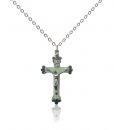 Crucifix Pendant 0566
8 × RM 9.80
Crucifix Pendant 0566
8 × RM 9.80  Crucifix Pendant 5298
16 × RM 7.50
Crucifix Pendant 5298
16 × RM 7.50  Gold Rose Crucifix 12 cm
20 × RM 23.00
Gold Rose Crucifix 12 cm
20 × RM 23.00  Miraculous Blue Medal
2 × RM 3.00
Miraculous Blue Medal
2 × RM 3.00  Cross Luminous 0566
6 × RM 3.80
Cross Luminous 0566
6 × RM 3.80  Twins Heart Jesus of Mary 4536
2 × RM 17.50
Twins Heart Jesus of Mary 4536
2 × RM 17.50 
 Cross Luminous 0567
Cross Luminous 0567  Crucifix Pendant 0566
Crucifix Pendant 0566  Crucifix Pendant 5298
Crucifix Pendant 5298  Gold Rose Crucifix 12 cm
Gold Rose Crucifix 12 cm  Miraculous Blue Medal
Miraculous Blue Medal  Cross Luminous 0566
Cross Luminous 0566  Twins Heart Jesus of Mary 4536
Twins Heart Jesus of Mary 4536 











